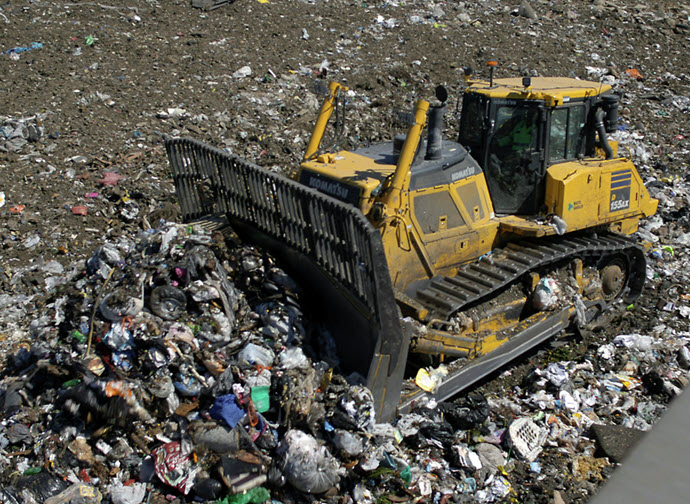
6 Emerging Innovations to Enhance Waste Site Sustainability
From 2020 to 2021, Australia generated 75.8 million tonnes of waste. This figure has steadily risen, increasing by 12.8 million tonnes (20%) over the past 15 years.
The good news is that Australia has made strides in recycling in recent years. However, 84% of plastic still ends up in landfills, where it can take up to 1,000 years to decompose. Efforts to reduce plastic use and improve recycling processes can address this issue in the future. Technological advancements and new methods adopted by waste sites and waste management companies may significantly boost sustainability efforts and mitigate the environmental impact of plastics and other waste.
Here are six promising advances making waste sites more sustainable.
Automated Technologies
Automated technologies can streamline waste management processes. These advancements include AI-driven predictions of waste generation and recycling, automated sorting of waste and recyclables, and cost reduction strategies to make sustainable practices more practical and profitable.
Artificial intelligence can also aid in waste removal during construction and renovation. AI algorithms can predict optimal pickup times to minimize landfill trips and reduce the amount of waste on work sites. This streamlined process will be appreciated by neighboring property owners.
AI applications in waste management help collection vehicles plan routes, analyze vast amounts of data to determine the most efficient treatment and disposal options, and predict future landfill, recycling, and solid waste disposal demands.
Australia has long faced challenges with waste sorting and recycling separation. Automated sorting systems can eliminate human error, maximize accuracy, and make intensive sorting more cost-effective.
Innovative Storage Solutions
Innovative waste containers can simplify collection and transportation while safely storing waste until it’s ready for sorting, compaction, or incineration. Modular containers can be deployed as needed, such as during large events, and easily relocated afterward.
Custom waste compaction systems can reduce landfill space requirements and handling costs while lowering emissions by reducing the number of trips needed for waste transport.
Reduced Use of Plastics
Plastic-free trends are growing in Australia. South Australia banned single-use plastic bags in 2009, with other states following suit over the next decade. NSW became the eighth state to institute a ban in 2022.
States are also considering bans on other single-use plastics, such as straws, takeaway containers, and cups. Since most plastic items end up in landfills, these bans will help limit plastic waste. One estimate suggests these efforts will prevent 2.7 billion plastic items from entering the environment over the next two decades.
Businesses like McDonald’s are also contributing by offering reusable packaging for dine-in customers. These containers are washed and reused, reducing waste in the fast-food industry.
Expanded Recycling and Reuse Programs
Recycling offers benefits such as reduced landfill reliance, cost savings, emissions reduction, and natural resource conservation.
Australia’s Recycling Modernisation Fund (RMF) aims to increase the nation’s ability to recycle plastic, glass, rubber, and paper products like cardboard. The government recently contributed $250 million to the RMF to modernize recycling infrastructure.
The goal is to reduce landfill reliance by creating a circular economy that relies primarily on recycled and remanufactured items.
These programs have also created economic opportunities and jobs in areas traditionally reliant on seasonal work, like farm labor. Waste removal companies can bring recyclable products to be sorted, recycled, and repurposed.
Ultimately, these efforts will increase the use of recyclable waste as raw materials rather than landfill cover.
Advanced Composting and Anaerobic Digestion Methods
Biodegradable materials, although not classified as plastics, often end up in landfills, taking up space and requiring transportation that produces emissions.
Composting and anaerobic digestion reduce the amount of organic waste needing landfill processing and transport. Organic waste can be challenging to manage due to odors, gases, and careful handling requirements.
Composting converts organic waste into nutrient-rich soil for agriculture and gardening. Traditional composting is labor-intensive and time-consuming, but new rapid composting methods can reduce decomposition to two or three weeks.
Anaerobic digestion extracts natural gases from organic matter for use as low-polluting biofuels. The remaining waste can then be converted into compost.
These processes save waste from landfills, lower pollution, and create value-added products, contributing to the circular economy.
Reducing Pollution from Landfills
Landfills produce methane, a potent greenhouse gas that affects global warming. New technologies enable waste sites to collect landfill gases. Passive systems use underground piping to move gas to a central collection point as it’s released, while active systems use vacuums and piping to maximize gas collection.
Effectiveness of methane collection systems can be assessed through ground-based monitoring and satellite imaging to detect emissions, alerting waste sites and regulators to excessive emissions.
Practical Steps for Individuals and Businesses
Individuals and businesses can support sustainability by using skip bins effectively. Proper waste sorting, packing to reduce trips, and removing air pockets can enhance waste handling sustainability. Understanding recycling sorting and placing recyclables in appropriate bins can streamline the process for waste processors.
These strategies and innovations will drive sustainable waste management, reduce environmental impact, and contribute to a more sustainable future.










